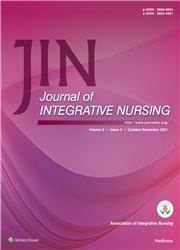Comparison of posttraumatic growth and posttraumatic stress of nurses with physicians and medical students after caring of COVID-19 patients
Q4 Nursing
引用次数: 0
Abstract
Objectives: The present study compared the prevalence and psychosocial factors affecting posttraumatic growth (PTG), posttraumatic stress disorder (PTSD), and psychological distress in nurses, physicians, and medical students. Materials and Methods: In a cross-sectional study, three groups of medical staff including nurses (n = 57), physicians (n = 40), and medical students (n = 34) who were responsible for the care/treatment of COVID-19 patients admitted to a general hospital for 4 months responded to Posttraumatic Growth Inventory, Brief Symptom Inventory-18, Resilience Questionnaire, PTSD Screen, and Social Capital-Integrated Questionnaire. Results: After the exposure of medical staff to at least 4 months of treatment/care of COVID-19 patients, PTG prevalence was higher than PTSD (38.2% vs. 14.6%), but they experienced some degrees of psychological distress (65.5%). The nurses had 8.33 (confidence interval [CI]: 2.5–26.7) times higher PTG rate than medical students (P < 0.001). Physicists also experienced 5.00 (CI: 1.4–26.7) times higher PTG than medical students (P < 0.001). PTG was aided by age, married status, strong resilience, and high social capital, but gender had no influence. Resilience played an important protective role to prevent the incidence of psychological distress in nurses, medical students, and physicians. Conclusion: Despite the fact that the PTSD and psychological distress were same in the three groups of medical staff, the nurses had a greater rate of PTG than physicians and medical students.护士与内科医生和医学生护理COVID-19患者后创伤后成长和创伤后应激的比较
目的:比较护士、医生和医学生创伤后成长(PTG)、创伤后应激障碍(PTSD)和心理困扰的患病率和社会心理因素。材料与方法:在一项横断面研究中,对某综合医院住院4个月的COVID-19患者负责护理/治疗的护士(n = 57)、医生(n = 40)和医学生(n = 34)三组医务人员进行创伤后成长量表、简要症状量表-18、复原力问卷、PTSD筛查和社会资本综合问卷的应答。结果:医护人员接触新冠肺炎患者至少4个月后,PTG患病率高于PTSD (38.2% vs. 14.6%),但存在一定程度的心理困扰(65.5%)。护士的PTG率是医学生的8.33倍(可信区间[CI]: 2.5 ~ 26.7) (P < 0.001)。物理学家的PTG也比医学生高5.00 (CI: 1.4-26.7)倍(P < 0.001)。年龄、婚姻状况、心理韧性强、社会资本高对PTG有辅助作用,性别对PTG无影响。弹性在预防护士、医学生和医生的心理困扰发生率方面发挥了重要的保护作用。结论:三组医务人员PTSD和心理困扰发生率相同,但护士PTG发生率高于医师和医学生。
本文章由计算机程序翻译,如有差异,请以英文原文为准。
求助全文
约1分钟内获得全文
求助全文
来源期刊

Journal of Integrative Nursing
Nursing-General Nursing
CiteScore
0.40
自引率
0.00%
发文量
3
审稿时长
17 weeks
 求助内容:
求助内容: 应助结果提醒方式:
应助结果提醒方式:


